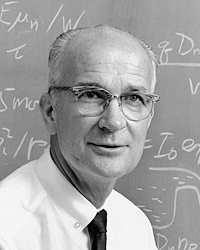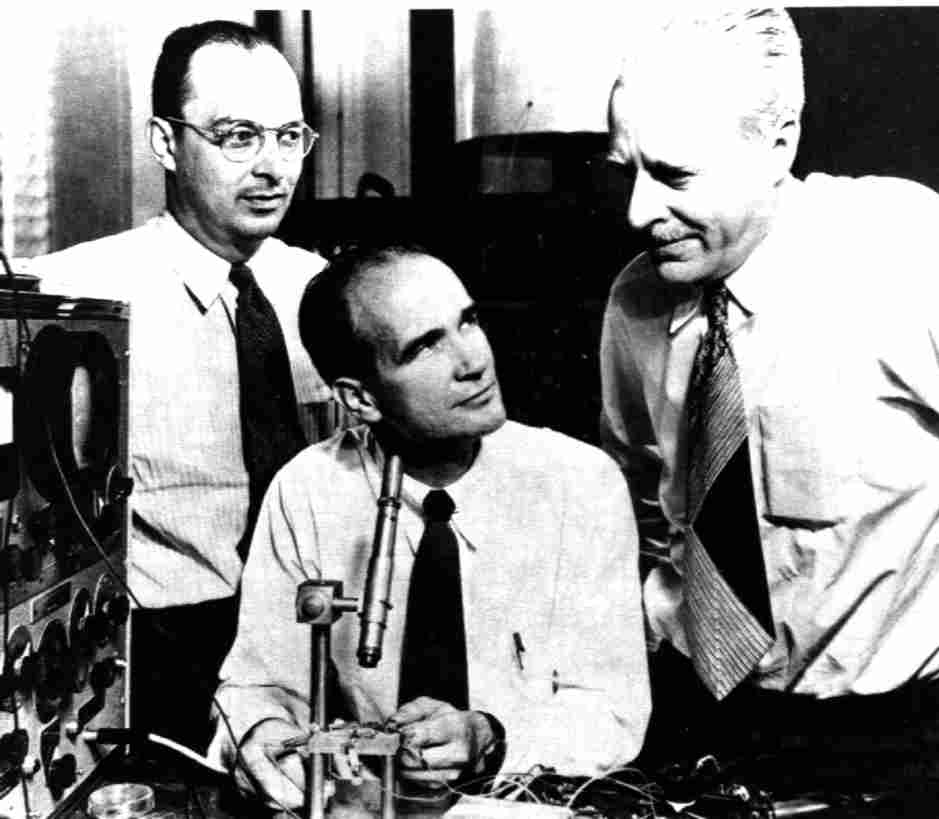| William Shockley and Solid State Electronics |
| Written by Historian | |||
Page 1 of 2
We tend to remember the first valve-based machines as marking a breakthrough from the mechanical/electro-mechanical devices that weren't really fast enough or powerful enough to show what a computer could really do. However, it really took the invention of the transistor and the move to solid state electronics to make computers available to a wider market.
William Shockley (1910-1989) William Shockley was the only child of a technological family. He was born in London, but his parents were both American - his father a mining engineer and his mother a geologist and he grew up in the area of the USA that we now think of as Silicon Valley - which may seem appropriate but it was the fact he was there that made it into Silicon Valley! In their home town of Palo Alto, his mother and father decided that they could provide a better education than any of the local schools and so William stayed at home until he was eight. When he finally went to school he didn't like it much and was constantly being held back to a slower pace. One thing was certain - he enjoyed physics and mathematics. In 1927 he entered UCLA and then after a year moved on to Cal Tech. He graduated in physics in 1932 and went on to do further work at MIT. Quantum mechanics was the latest thing and he specialised in a new branch of the subject called solid state physics. Towards solid state electronicsQuantum mechanics is the fundamental theory that describes how subatomic particles behave and solid state physics uses this theory to explain and predict the behaviour of large numbers of atoms interacting together. Shockley's doctoral thesis was on "Wave functions for electrons in Sodium Chloride crystals" - in other words common salt. This may not sound as if it would lead to an important discovery but the way electrons behave in crystals is the foundation of solid state electronics. After his graduate work Shockley joined Bell Labs working in the vacuum tube (valve) division - well what else would you do with an expert in solid state physics! The department was interested in ways of replacing the electro-mechanical relays used in telephone exchanges. They were planning to use vacuum tubes but the need for a fast, cheap and reliable switch was something that started Shockley thinking about solid state devices. But such ideas would have to wait because the World War II got in the way. Schockley left Bell to do work on radar equipment and submarine attack strategies for the Navy. During the war, attention returned to the old technology of crystal detection (as used in early crystal sets) only now using more sophisticated PN junctions in a semiconductor. Research at BellIn 1945 Shockley became co-director of the solid state research program at Bell. He formed a team with Walter Brattain and John Bardeen. Brattain was an experimenter who could make things work. Bardeen was a theoretician who could make sense of the results of the experiments that Bardeen made work! Shockley played the role of both practical experimenter, theoretician and manager. In the early days Shockley and Brattain tried to make a Field Effect Transistor (FET) by creating a small copper oxide control grid on top of a PN junction. They failed due to the action of surface effects that would later be understood well enough to make the Shockley-barrier FET a reality. This early experiment may have been a failure, but it put the idea into Brattain and Bardeen's minds that the conductivity of a piece of semiconductor could be altered by injecting "holes", i.e. positive carriers, into a PN junction.
An early point contact transistor The only trouble with the idea was that the wires that injected the positive charge had to be close together - very close. In fact so close that only Brattain, the ace experimenter, could make the arrangement work. But work it did and the Brattain and Bardeen point contact transistor was demonstrated on December 23, 1947 by amplifying a human voice. At first the demo showed the increase in current via meters. Then a microphone was hooked up and each of the spectators said "hello" and were rewarded by hearing an amplified "HELLO" come from the speaker. The transistor age had been born in a scene that mimicked Bell's original invention of the telephone. The point contact transistor wasn't practical, however. Even Brattain had to admit that he first positioned the wires then fiddled until the device worked. This was no way to build the components that the computer industry would need by the million! Shockley was sad and frustrated that he had had so little direct input into the creation of the first transistor - impractical though it was. He wrote, "My elation with the group's success was tempered. I experienced some frustration that my personal efforts had not resulted in a significant inventive contribution of my own." Still, Shockley was always included in photos as the co-discoverer of the point contact transistor.
The three inventors of the transistor - from left to right Bardeen, Brattain and Shockley.
<ASIN:0444527826> <ASIN:0521289033> <ASIN:0393318516> <ASIN:1403988153> |
|||
| Last Updated ( Thursday, 04 February 2021 ) |



